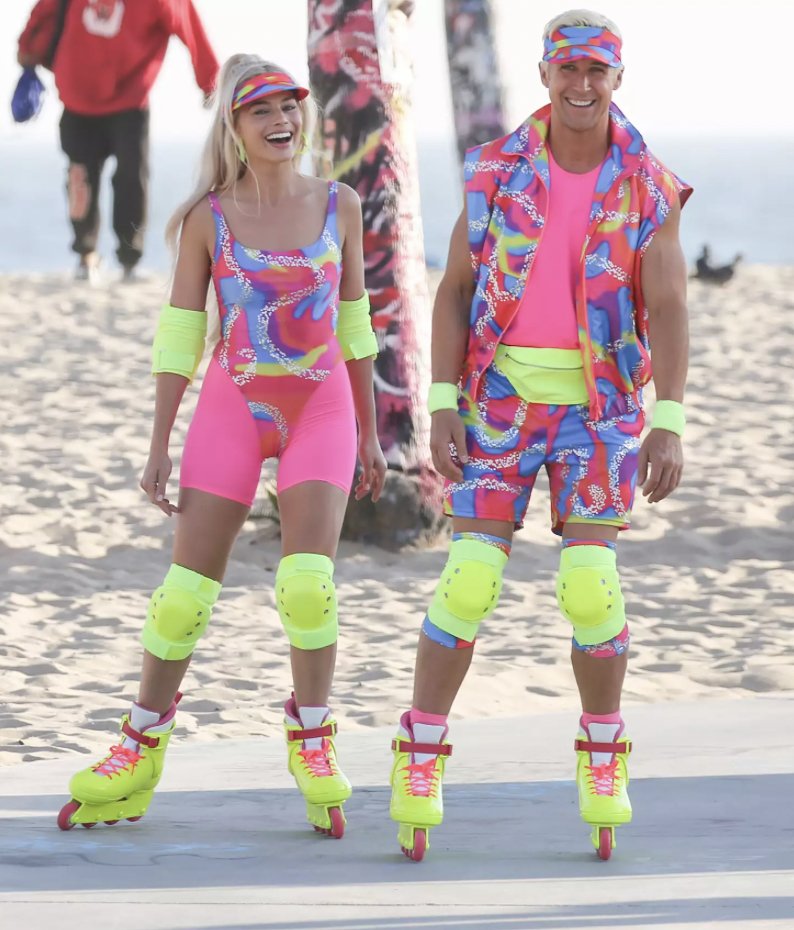The Power of Costumes: How They Contribute to the Story in a Movie
Margot Robbie and Ryan Gosling on the set of “Barbie.”
Costumes have always been a vital part of filmmaking. They help actors embody the characters they are playing, and they provide visual cues to the audience about the story and the world in which it takes place. The right costume can make a character instantly recognizable, and the wrong one can take the audience out of the movie entirely. In this blog post, we will explore how costumes contribute to the story in a movie and the importance of costume design in filmmaking.
Costumes are essential in setting the scene and transporting the audience to the time and place of the movie's story. They are used to create character archetypes, representing social classes, professions, and geographical locations. In the context of Gerwig's upcoming Barbie movie, the importance of costume design to the narrative cannot be understated. The aesthetic choices in Barbie will transport audiences to a world where fashion and character identity are intrinsically linked. The outfits donned by Barbie and her friends not only encapsulate their unique personalities, but also embody their roles within the movie's societal structure. For instance, Barbie herself is often seen in glamorous, fashionable outfits, highlighting her role as a style icon.
Credit: 20th Century Fox/Courtesy Everett Collection
Andy's style journey, transitioning from being an outsider to becoming exceptionally fashionable, before finally settling somewhere in the middle.
Costumes also play a significant role in developing characters throughout a film. The costume design team has to work closely with the director and the actors to create outfits that represent the characters' personality, arc, and backstory. For example, in The Devil Wears Prada, Miranda Priestly's (Meryl Streep) wardrobe was a symbol of her power and control over the fashion industry. Her chic, tailored suits and killer heels were a representation of her unwavering authority. On the other hand, Andy (Anne Hathaway) started in the film wearing casual clothing, mirroring her lack of interest in the fashion industry. As the movie progressed, her outfits became increasingly fashionable, signifying her growth and transition into the world of fashion.
Costumes also help to set the film's mood and atmosphere. They can convey different emotions or evoke certain feelings in the audience. In The Hunger Games, for example, the costumes used in the opening ceremony scene were meant to convey the Capitol's excess and cruelty. The garish, over-the-top outfits worn by the Capitol's residents were a contrast to the districts' poverty and deprivation, and they represent the government's control and manipulation of the participants.
Harry Potter and Draco Malfoy in their quidditch uniforms.
Costumes offer a rich opportunity for both overt and subtle symbolism. This is evident in the Harry Potter series, where the attire of each house represents their distinctive values and qualities. For instance, Gryffindor, a house celebrated for bravery, daring, and chivalry, is represented by vibrant red and gold robes. These colors reflect the intensity and vibrancy of fire - the element Gryffindor stands for - and symbolize the courage and valor of its members. On the other hand, Slytherin's green and silver robes hint at the depth and mystery of water, the element this house embodies. These colors symbolize the ambition, cunning, and resourcefulness that Slytherins value, subtly suggesting the wealth and status these traits could command.
Finally, costumes serve a pivotal role in branding and marketing, acting as powerful storytelling tools that embody the identity and narrative of a brand. They become symbols, representing more than just the characters who wear them, but the essence of the film or franchise itself. Merchandise featuring these iconic costumes can generate significant revenue, turning a costume into a lucrative asset. A prime example is the costume worn by Darth Vader in the Star Wars franchise. The black armored suit, complete with its menacing helmet and cape, has become an iconic symbol of the series. It's not just a character costume but a representation of the franchise's themes of power, conflict, and transformation. This iconic status extends beyond the screen, with Darth Vader merchandise, from action figures to Halloween costumes, generating millions of dollars in sales every year, thereby proving the immense marketing value of well-designed and symbolic costumes.
In conclusion, costumes play a crucial role in storytelling and filmmaking. They help to set the scene, develop characters, create mood and atmosphere, provide symbolism, and become recognizable symbols of the movie itself. They have the power to make a film more memorable, immersive, and impactful for the audience. When done correctly, costume design adds a new layer of dimension to the story and enhances the overall viewing experience.








